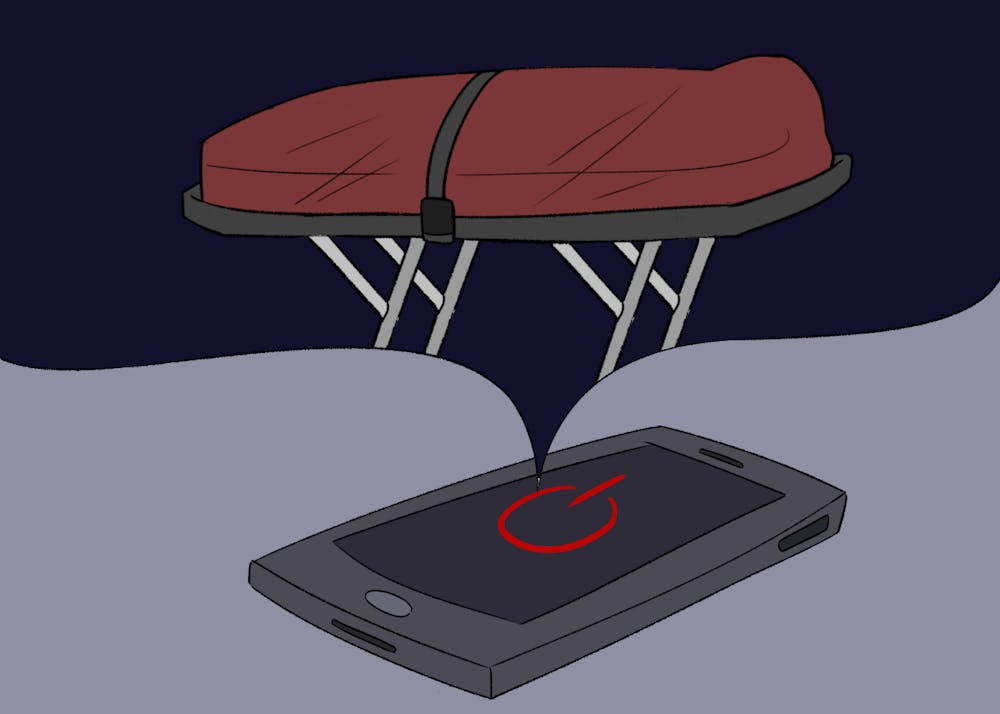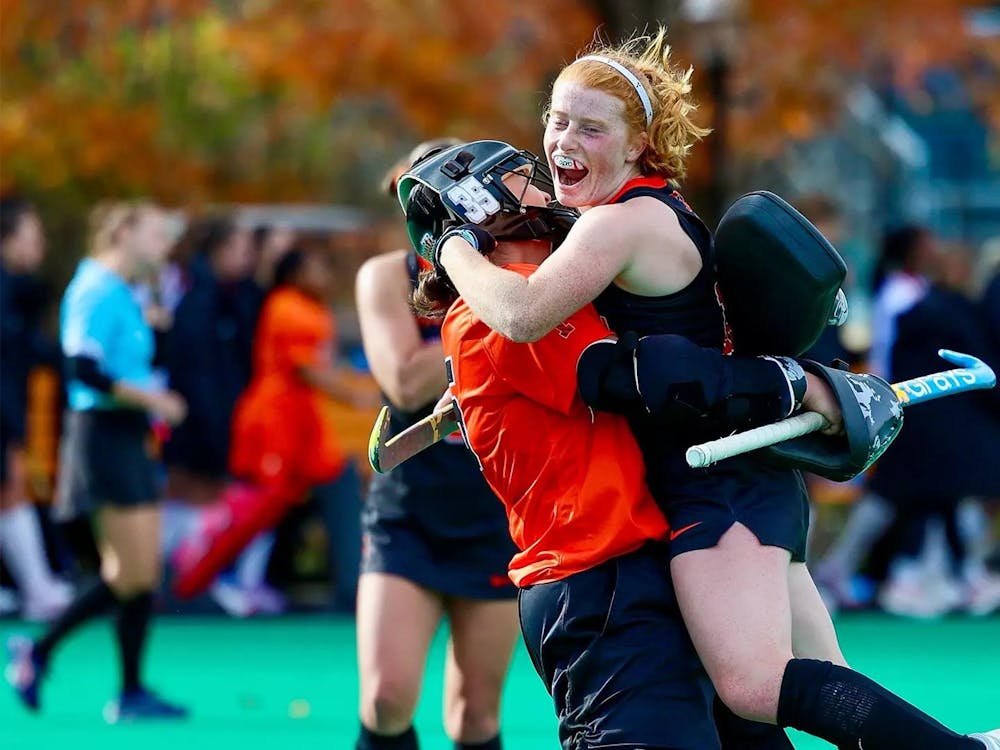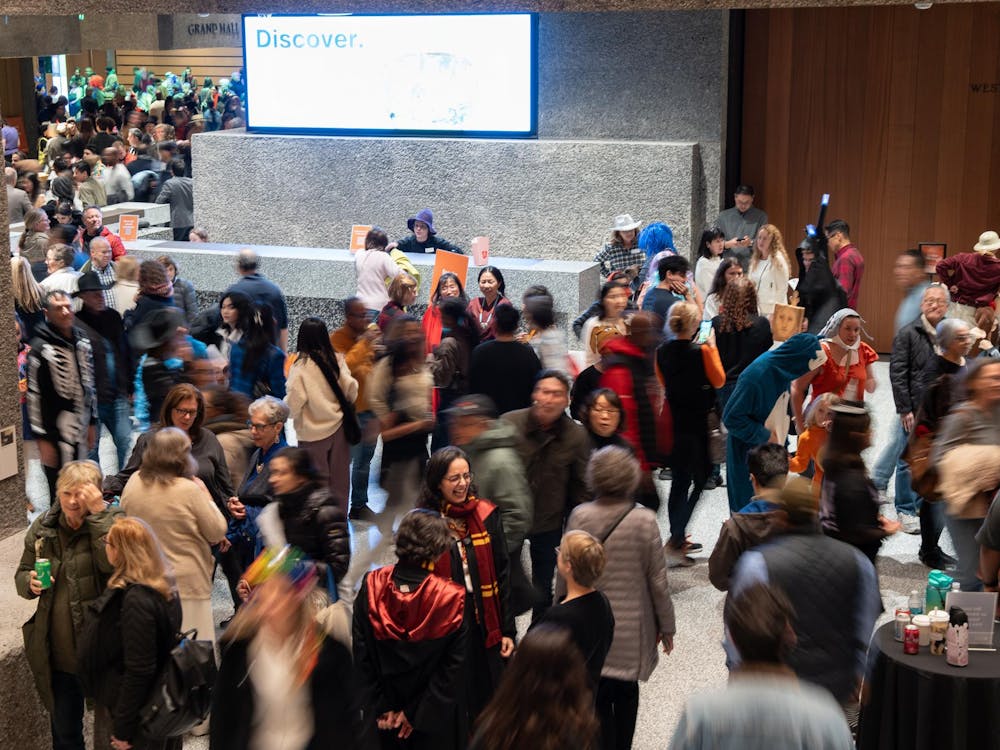Violence is quintessentially American. That’s not an opinion. There have been at least 50 mass shootings — or incidents in which at least four people have been injured or killed by gunfire — in the past month. As of writing, police have killed 292 people so far in 2021 and 985 since April 27, 2020. There is also the United States’ long history of violence against and exploitation of those deemed less valuable on the grounds of race, gender, sexuality, and ability. Violence is so American that we as a collective are largely numb to it.
Consumption of violence has become normalized with the rise of social media and cellular devices that enable people to record brutal attacks, including widely-circulated clips of police violence. While some valorize these recordings and other representations of death — and specifically Black death — as “teaching tools,” that mentality degrades and dehumanizes the dead and ignores the fact that there are living people fighting injustice and saying what’s wrong.
A white professor once suggested that I engage more with how videos of police “bad behavior” can serve an educational function and teach white people about racism. This interaction reminds me of how, when I was very briefly an exchange student in Lille, France, an English teacher used audio recordings of the 911 calls from the Columbine shooting as a listening exercise. She played them over and over and over again. One student left the room crying, and I followed shortly after. The teacher later apologized and said she hadn’t realized that the clips would upset anyone.
Think about these events. A University professor says footage of Black people being harmed and killed can be “educational.” A teacher in another country chooses audio of teenagers being gunned down in school to double as a way to practice English. I consider Sesame Street, feature-length nature documentaries, and Khan Academy videos good examples of things that are “educational.” I consider clips of people being harmed horrific.
How have we gotten to the point that many educators default to using violence against human beings as an educational tool for their students? As I will talk about later in this column, this has been the norm for a long time. In our current moment, media coverage and social media posts about violence have likely also contributed to the collective numbing necessary for this mindset to remain largely unchallenged: these media outlets for the most part do not recognize the humanity of the victims nor do they encourage us to view them humanely. Victims become props — unfortunate bodies in the path of a mass shooter who is profiled in excruciating detail. They become criminals — “thugs” who threatened police and deserved their death.
This dehumanization makes it easy for public discourse to be largely apathetic to the victims. Conversations contain points like: “Well, no, gun control is still impossible,” “Police protect us from bad people like him,” “He shouldn’t have been out on the streets,” “She should’ve stayed at home and not led him on.” People from elementary school age to grandparent age are reduced to nothing, to no one.
Assisting the proliferation of such narratives is the non-humanity of many victims of violence in the public imagination. Stereotypes teach us to fear and hate one another, making it possible to neutrally watch videos of police violence and pan through murder statistics: the Black criminal, the Latino criminal, the Asian foreigner, the Muslim terrorist, the perverted trans teenager … none of these images are real. What is real is the pain, suffering, and humanity of those stigmatized and treated as disposable day in and day out, and only being recognized as having suffered when someone kills them (and often not even then).
I’d like to take this space now to share some of what I’ve been able to learn about the recent victims of violence: narratives that are often lost in a cesspool of recorded suffering and apathetic discourse.
According to the Toledo family’s lawyer, “[Adam Toledo] loved going to the park. He was a young uncle. He had a 1-year-old and a 2-year-old nephew that he would dote upon and take them down the slides. He was an emerging artist based on his teacher's comments. He liked playing cards, biking around the neighborhood with his little brother and [making] Lego creations.”
George Floyd wanted to learn how to dance Bachata and loved to help others.
Ma’Khia Bryant is remembered by her mother as an “honor school student and a sweet child” who had a “motherly nature about her.” She also created and shared videos on TikTok.
Daunte Wright loved his son and playing basketball, was voted “class clown” in his freshman year of high school, and was recalled by his mentor saying things like, “‘I want to be an NBA player, I want to be a fashion designer, I want to be a business owner.’”

Xiaojie Tan owned Youngs Asian Massage, protected her employees, and surprised a friend with a cake and flowers on his birthday.
According to her son, Yong Yue “loved to introduce our family and friends to her home-cooked Korean food and Korean karaoke … She was always kind-hearted and willing to help everyone she encountered.”
According to her granddaughter, Suncha Kim “migrated to the USA from Seoul, South Korea to provide for a better life for my family. Like many Asian immigrants, she spoke very little English and worked two to three jobs. This took immense courage and my grandmother was a fighter.”
Amarjeet Kaur Johal enjoyed Indian TV soap operas and was known for making bean dip for her family’s gatherings.
Matthew Alexander loved collecting baseball cards and is remembered as a “perfect friend.”
These are only a few stories. I’d also like to remember Hyun Jung Grant, Delaina Yaun, Paul Andre Michels, Daoyou Feng, Soon Chung Park, Samaria Blackwell, Jasvinder Kaur, Amarjit Sekhon, Jaswinder Singh, Karli Smith, John Weisert, Lindani Myeni, Remy Fennell, Vicha Ratanapakdee, David Suarez, Andrew Brown, and all those whose lives have been senselessly cut short by violence and the structures that perpetuate and inflict it.
I could scour the Internet for details about these people’s lives forever, and the numerous people this list does not include. It still wouldn’t be enough to adequately memorialize any of them. Every single person who gets turned into a blip in a Facebook video, a sensational headline, or a pawn in politicians’ platforms had a life: friends, families, dreams, aspirations, passions, hobbies, quirks, favorite shows, frustrations, routines, infinitely more. They mattered, they shouldn’t have been killed, and their deaths were not inevitable. Reducing their entire existence to the moment of their deaths — and having the audacity to valorize their deaths or footage of their deaths as a “teaching tool” — is immensely disrespectful, derisive, and dehumanizing.
Princeton is guilty of this racist form of violence as well, as anthropology Professor Emeritus Alan Mann and Penn Museum curator Janet Monge possessed the remains of Black children killed by the state bombing of the MOVE house in Philadelphia in 1985. The latter literally used them as a teaching tool in an online course offered by Princeton that has since been deleted.
While the University has now apologized for the handling of these remains, its initial response to these revelations was disconcerting, as faculty members argued in an op-ed yesterday.
Equally disappointing was Department Chair Carolyn Rouse’s initial response, in which she expressed complete indifference and refused to engage with the reality of the situation. In an interview with The Philadelphia Inquirer, she stated, “This is no controversy. This is a problem to be solved. There’s no racism. This was a forensic investigation and nobody came to claim the remains.” Rouse has since apologized for her initial reaction, explaining in a letter to the Association of Black Anthropologists that she “should have done more due diligence to determine the chain of custody of those remains.” But she insisted that the anthropology department “is not racist.”
However, this was the racist appropriation and use of Black children’s remains without the consent or knowledge of their next of kin, whose identities were known. It is reminiscent of the much longer history of racism in science and medicine: a history that is not yet past. Black people have been experimented on, forcibly sterilized, and intentionally harmed, and Black remains have been stolen and picked apart — all in the name of building “knowledge” for white medical and educational institutions. Unlike Rouse states, there is racism here, and it is the rule rather than the exception.
Ultimately, the MOVE community should not have to petition for returns and reparations; no one should have to tell the University that stealing and studying the remains of children is wrong. The problem is that institutional actors often refuse to listen to or acknowledge the humanity of marginalized groups. While I was writing this piece, I received an email from the School of Public and International Affairs with the subject line “Justice for George Floyd.” In it, Interim Dean Nolan McCarty wrote “The killings of George Floyd and many other unarmed Black Americans — against the backdrop of a pandemic disproportionately affecting minority communities — is a wake-up call that was long overdue.”
While I appreciated the email’s later mention of addressing systemic factors that result in regular police killings, there has been no shortage of wake-up calls. As long as there have been systems that result in differential life outcomes for different people, there have been people fighting those systems. Those people are just often ignored. To refuse to stand in solidarity with them, to refuse to listen and learn, and to opt to consume the suffering of Black people instead of doing anything to remedy that suffering — that is a choice. It is an active, violent, awful choice.
I wrote this piece to think: I got the urge to write something, anything, to process the murder of Adam Toledo and the fact that I had to parse through numerous headlines about the question of a gun, blurry screencaps of camera footage, and articles demonizing a child to find anything remotely related to what he was like in life.
I also wanted to hold multiple things in my head at once. The media and politicians often frame all these forms of violence as disparate and isolated. That is not the case. We can and must acknowledge that structural racism results in, as University of South Carolina Professor Seulghee Lee puts it, “anti-Asian violence in an anti-Black world.” We can and must recognize that the state that mobilizes police to surveil, harm, and kill Black, Indigenous, and Latinx people is the one that allows mass shooters access to the weapons they need to kill; it is the same state that has enshrined whose life matters and whose life doesn’t within law and policy, ideology, and the way the economy functions. Thus, it systemically enables individual actors to make the same valuations.
Since I started this piece, a jury delivered the verdict on Derek Chauvin, who killed George Floyd, police in Columbus, Ohio, killed Ma’Khia Bryant, and the news about the anthropology department broke. Each revision was emotional, and no revision was enough to capture how awful the undulation of public horror to public apathy and over again is. Even now, in a calmer state, I feel as though I’ve arrived at the edges of what “discourse” can accomplish. It boils down to this, as put by the artist Michael James Schneider: “I don’t know how to explain to you that you should care about other people.”
I don't know what to say to people who feel they need to see “evidence” of Black people being killed in order to recognize their humanity and take racism seriously. I don’t know what to say to people who easily digest human suffering alongside their morning coffee and go through the circuitous work of justifying it, forget it by the week’s end, remember it only to use as a juicy detail in their next low-stakes policy debate, or even feel satisfied by it.
The idea that people should be safe from being murdered by state or state-enabled actors shouldn’t be subject to argument in the first place. The fact that it is argued consistently boggles and horrifies me. I don’t know what humanity is apart from the ability to love, care for, relate to, and communicate with one another, and I don’t know if there’s anything I can say or do to convince people that that’s true. No one should have to convince anyone of that point: no one should have to beg to be treated with a modicum of respect. I will instead continue to write, learn, and grieve, and get more involved in activist efforts advocating for our collective liberation.
Brittani Telfair is a junior from Richmond, Va. majoring in SPIA and pursuing a certificate in African American Studies. She can be reached at btelfair@princeton.edu.








